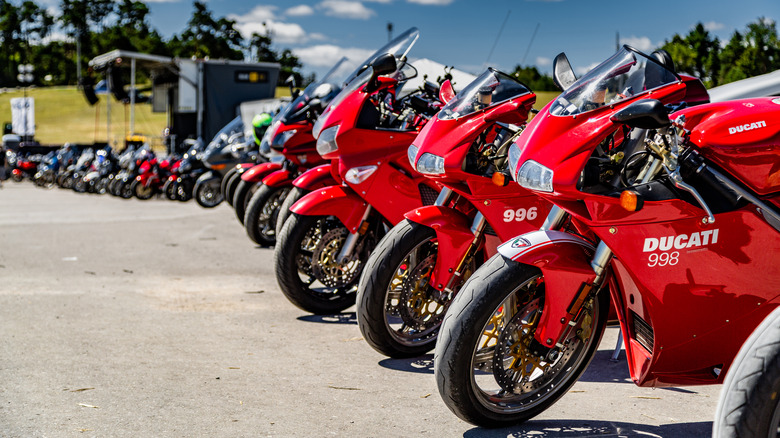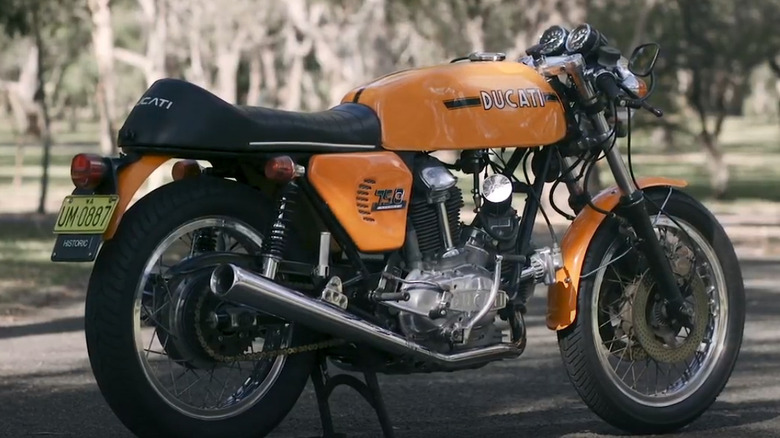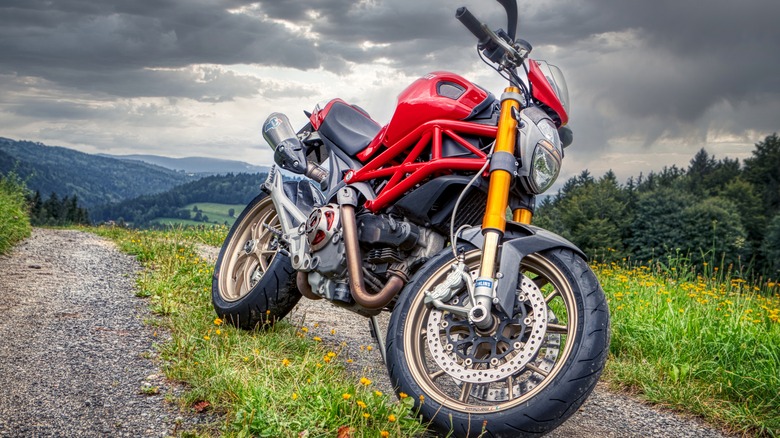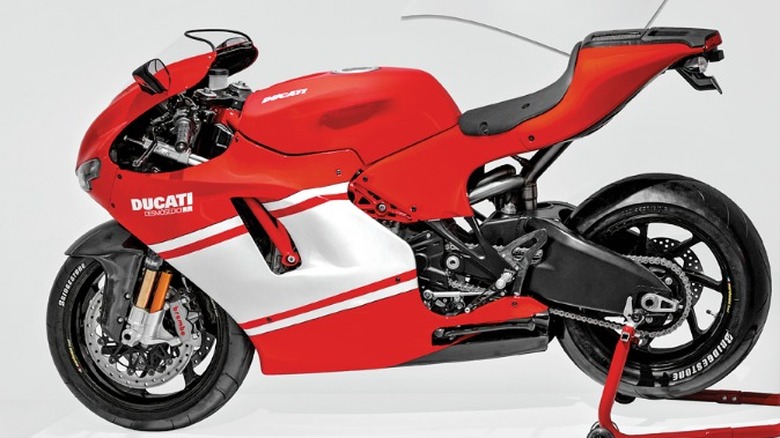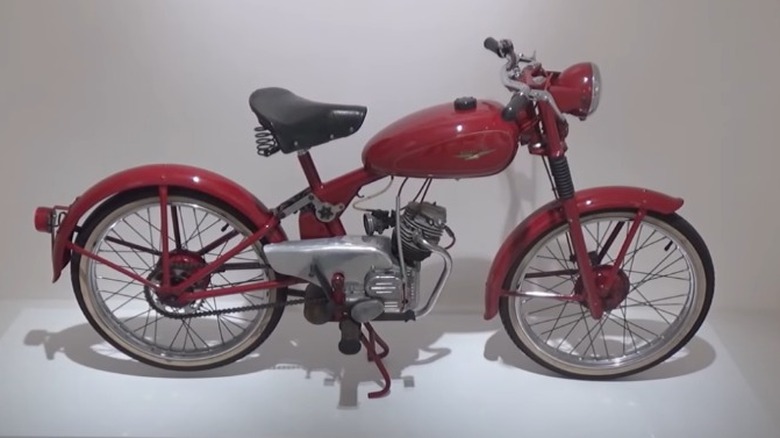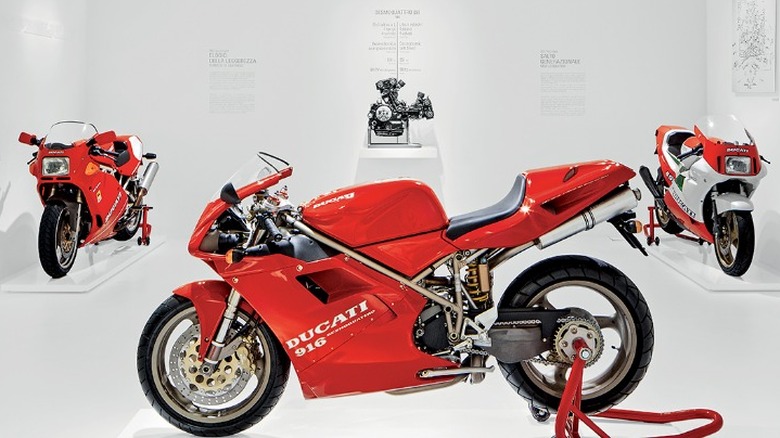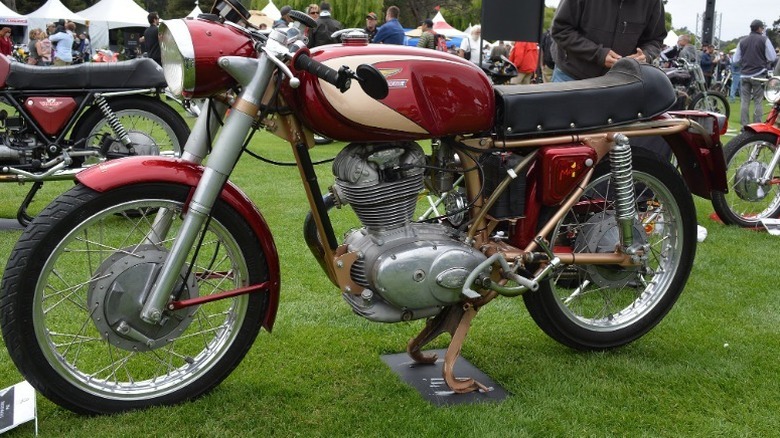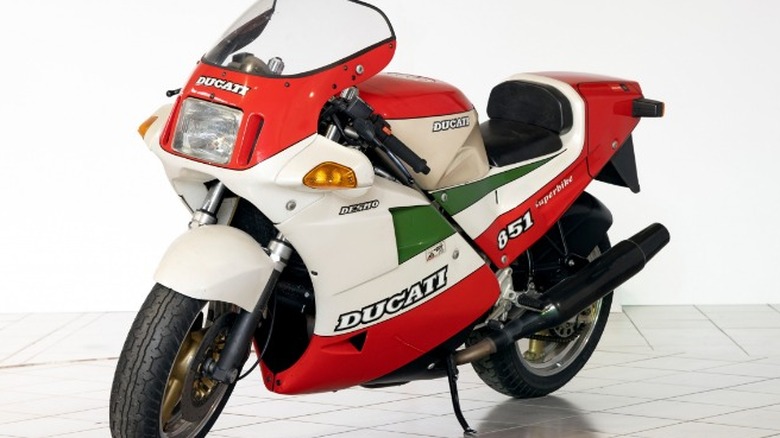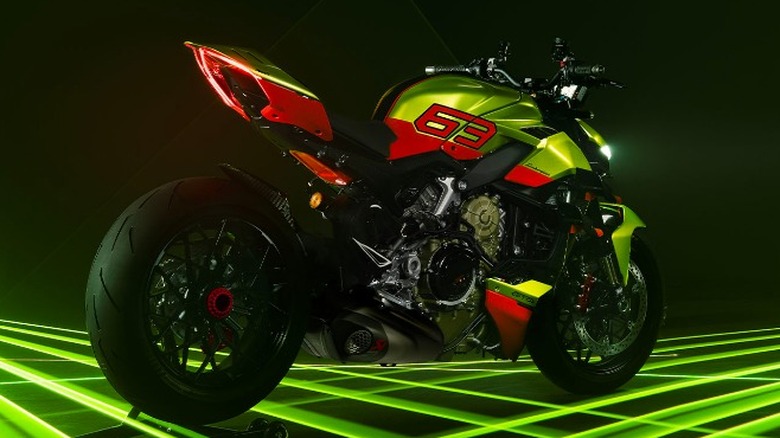The 8 Best Ducati Motorcycles Ever Made
Ducati is a storied Italian motorcycle manufacturer that has been creating some of the most desirable and significant motorcycles in the world, including scores of bikes for the street and the track. Although it is today owned by Audi, the company was formed in the early 20th century when three brothers banded together to form a company to build radios. It would not be until the aftermath of WWII and the decimation of their factory that Ducati changed over to producing two-wheeled transportation, according to the company.
For the second half of the century, Ducati made motorcycles that showcased the clever engineering and competitive spirit of the Italian people with some of the fastest and most attractive motorcycles on the market. Ducati's first engine, the Cucciolo, (Italian for puppy), was a clip-on engine for bicycles that sold well and set the path for future motorcycle development. Ducati was also involved in racing from the start, creating many bikes expressly for breaking speed records (via Run Moto Run).
The Ducati name is now synonymous with the finest quality and best-performing motorcycles on the market. They still win races and their reputation allows Ducati bikes to sell for a premium, with top models being more expensive than some cars. Ducati does not let its reputation carry the brand and is still a center for innovative engineering and Italian styling. Although there are dozens to choose from, these are, in no particular order, the best eight Ducatis ever made.
Ducati 750GT
The early seventies motorcycle market saw the emergence of larger and faster bikes from Japan, with models such as the Honda CB650 and Kawasaki Z1 dominating the field and redefining what a motorcycle was for the time. Ducati had been making a variety of smaller machines and wanted to break into the market with a larger displacement motorcycle.
The 750GT debuted the signature Ducati V-twin engine arranged with one cylinder sitting vertically and the other pitched forward and it became a Ducati signature. This layout gives a low center of gravity and good cooling as well. The 750 GT was a powerful bike for the time with a horsepower of 60, which led it to take first and second place in the Imola 200 series (via Timeless 2 Wheels).
In addition to great performance, the Ducati 750GT is a striking example of good motorcycle design from the early seventies. It has the right blend of chrome and curves and, today, it is worth more than most new bikes.
Ducati Monster
The story of the Ducati Monster stems from a need for the niche motorcycle manufacturer to bring in much-needed revenue. Producing a model that was affordable and more apt for everyday driving is what was needed and the Monster fit the bill. The first monster was a 900cc air-cooled twin nestled into a more basic and paired-down frame than the superbikes of the eighties for which Ducati was known. Later years offered a smaller 600cc and a short-lived 750cc model for those who were fine with trading off big power for a lower price. It became the everyman's Ducati to the extent a high-end Italian motorcycle could be (via Visor Down).
Various upgrades have been applied to the line including single swingarms, water-cooling, and upswept exhaust. But through the line, the Monster has retained its core function of being a basic version of an excellent motorcycle. Now having three decades under its belt, the Ducati, according to Hagerty, is a bit more sophisticated and has a larger engine but, at $12,000, is still affordable, especially considering how much you can spend on top-line Ducatis. As long as the success of this model continues, the Monster probably has more decades to come.
Ducati Desmosedici RR
Ducati has a long history of competition in high-speed two-wheel racing with some of the fastest bikes taking many checkered flags over the years. Sometimes the technology put into these winning bikes filters down into road-going versions and other times a whole race bike goes on sale, mostly. In 2006 Ducati presented its GP06 Desmosedici for use in upcoming MotoGP racing, which resulted in much fanfare.
Then, for those who wanted the feel of riding a race-winning superbike, Ducati released a limited-run version called the Desmosedici RR with some changes making it suitable for the street.
Cycle World says that despite rumors of them being exactly the same, the street version uses a unique engine made separate from the race-ready bike, but that it is very similar. That engine is a 1198cc 90-degree fuel-injected and water-cooled V4 engine that sends 170 horsepower to the rear wheel. The bike also achieves ludicrous speeds by shaving weight from the use of magnesium wheels and copious amounts of carbon fiber. The list of impressive specs is long but the looks are that of an unsponsored racer. No doubt this sort of speed and sophistication does not come cheap and that is somewhat evident as it is among the motorcycles owned by famed motorcycle-riding jet pilot Tom Cruise.
Ducati 60
Everyone has to start somewhere, even radio manufacturers breaking into motor manufacturing. As such, the first Ducati engine came out in 1946. The company had already been successfully selling its Cucciolo engines affixed to bicycles in post-war Italy and took the next step to build a frame also, coming up with the Ducati 60 in 1949. This primitive Ducati was in reality not much more than a Caproni bicycle fitted with a Ducati engine but done by Ducati at their factory, thus creating the first Ducati motorcycle (via Motorcycle Classic).
It may not be much to look at today, but it was the start of what would become an incredible motorcycle maker. However, in post-war Italy, anything would do for the population trying to rebuild their country and their lives. Cheap transportation was in great demand and those companies that could supply it at the time would see enough profits to pursue grander ventures. It just so happens that Ducati used its profits for racing and that gave way to some of the fastest and greatest bikes on the planet, all thanks to the diminutive little puppy-powered bicycle called 60.
Ducati 916
Ducati entered the world of modern superbikes in the eighties after being taken over by Cagiva. And in the nineties, when it was time to up their game, they brought out the 916, a Ducati blueprint for the highest-performing bikes from the brand until today. To call the bike beautiful would be an understatement to many. Robb Report calls it the "Michaelangelo of Motorcycles," attributing its svelte styling to Ducati designer Massimo Tamburini. While it shared many characteristics of the uber-powerful bikes coming out of Japan at the same time, it held onto uniquely Italian characteristics, also leading to its designation as "The Ferrari of Motorcycles."
While the 916 is a stunning motorbike, it also has the performance to match. Using the signature L-twin engine setup for which it had become known, Ducati smashed a four-valve desmodromic 916cc engine in its lightweight steel-tube trellis frame. While the 916 produced a bit less power than its Asian rivals, its 50:50 weight distribution and the high-revving twin-cylinder engine gave it better performance and excellent handling characteristics. According to Motor Biscuit, its performance was so good that Ducati received every World Superbike Championship from 1994 to 1998 with its 916, and the current Paginale V4 is its direct descendant.
Ducati Mach 1
Most motorcycles of the early sixties had much smaller engines that would be seen a decade later. Aside from Harley-Davidson and some BMW bikes, 500cc engines were huge compared to most. This was the time when Ducati produced some pretty amazing 250cc bikes, including the Mach 1. Contrary to what some modern minds may think, a 250cc Ducati was not an entry-level bike in the sixties, and Ducati made these to win races, and they did. Motor Biscuit reports that, while its 250 engine produced a scant 28 horsepower, it was capable of hitting 106 mph.
The desmodromic valve system used by Ducati then and now allows its engine to rev higher and extend the top end of the power curve. Although the Mach 1 was a relatively powerful machine with a high top-end, it would not see a race win until 1969, after production had ended. However, while it was not the race-day winner, it led to future bikes that would take home many victories for Ducati. Today, the Mach 1 is an attractive classic bike that will turn heads wherever it goes.
[Featured image by Daniel Hartwig via Wikimedia Commons | Cropped and scaled | CC BY 2.0]
Ducati 851
The eighties were a time of big changes for motorcycles. While some bikes grew larger into giant, car-like touring machines, others took on characteristics of GP racers for the street. While Suzuki's GSXR was hailed as the first superbike, Ducati's 851 could be said to have taken the superbike formula and perfected it. Unlike the Japanese competition, Ducati stuck with a twin-cylinder engine, using its signature L-twin design for its first genuine superbike. However, this would be Ducati's first water-cooled version, its first 4-valve head, and its first fuel-injected motorcycle, a rarity for 1987 (via Bike Social).
Cagiva's purchase of Ducati in 1985 led to a huge influence on the brand toward performance motorcycles. Using its expertise in building winning race bikes, Ducati built the 851. In turn, Cagiva equipped its bikes with the ingenious Desmo L-head Ducati engines (via Classic Motorbikes). The result is this ultimately desirable Italian superbike with 104 horsepower and stunning good looks. The good news for modern riders is that, while many classic superbikes have risen in value to obscene levels, an 851 can still be had for a reasonable price, as one sold recently on Bring A Trailer for under $15,000.
Ducati Streetfighter V4 Lamborghini
While Ducati may have once been called the "Ferrari of Motorcycles," it can now literally be called the "Lamborghini of Motorcycles" due to its collaborative tie-in with the Italian performance manufacturer. The collaboration makes sense as both manufacturers fall under the same corporate owner, VW. Deciding what factors to use considering which Ducati is the best can be a bit subjective, but if brute force power alone were to decide, the 208-horsepower Streetfighter would win hands-down. According to the manufacturer, this bike comes from the combination of Ducati's proven success in motorcycle engineering paired with Lamborghini's flamboyant styling department, creating a motorcycle that exceeds the boundaries of power and aesthetics. This bike is also a limited run with a total of 630 copies being made and listed for sale at $68,000.
This is not the first collaboration between the two companies, but that makes this bike any less special. Cycle World reports that, in addition to the 630 units planned, an additional 63 special edition bikes will be made with custom-tailored options for buyers. The number 63 is significant as it is the number worn by Ducati Corse racer Francesco Bagnaia, who has ridden the team to multiple first-place wins. The Streetfighter engine is a V4 engine with a displacement of 1,103 complemented by the best engine management technology and suspension equipment to make it one of a kind. The high cost of ownership will not be the only thing preventing you from owning one either. They sold out in a matter of hours.
